Introduction
Roasting chestnuts has been a cherished tradition across various cultures, offering a warm and comforting snack during the colder seasons. Among the myriad varieties of chestnuts available, Qianxi chestnuts, originating from Qianxi County in China’s Hebei Province, stand out due to their sweet flavor, tender texture, and ease of peeling when prepared correctly. This guide delves into the intricacies of roasting Qianxi chestnuts, focusing on techniques that ensure they are not only delicious but also effortless to peel. By understanding the unique properties of Qianxi chestnuts and employing the right methods, you can enjoy a perfect roasted chestnut experience every time.
Understanding Qianxi Chestnuts
Before diving into the roasting process, it’s crucial to understand what makes Qianxi chestnuts special. These chestnuts are renowned for their superior quality, which is attributed to the region’s fertile soil, moderate climate, and ample rainfall. Qianxi chestnuts are typically medium-sized with a glossy outer shell and a creamy, sweet flesh that melts in your mouth. Their shells are relatively thin and adhere less to the kernel compared to other varieties, making them ideal for easy peeling.
Selecting the Right Chestnuts
The first step in achieving perfectly roasted and easy-to-peel Qianxi chestnuts is selecting high-quality nuts. Here are some tips for choosing the best ones:
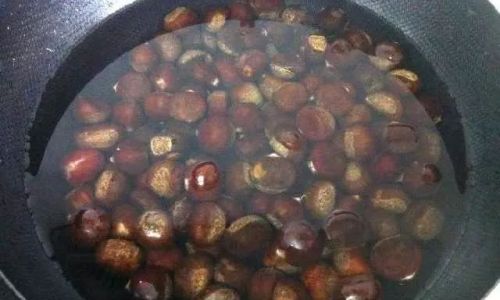
-
Appearance: Look for chestnuts with smooth, shiny shells that are free from cracks, holes, or mold. The color should be a uniform dark brown.
-
Feel: Give the chestnuts a gentle squeeze. They should feel firm but not overly hard. Avoid nuts that feel soft or mushy, as they may be rotten.
-
Freshness: Opt for chestnuts that are freshly harvested. Older nuts tend to have drier, less flavorful kernels and their shells may become more difficult to peel.
-
Origin: Ensure the chestnuts are labeled as “Qianxi Chestnuts” to guarantee their authenticity and quality.
Preparing the Chestnuts for Roasting
Once you’ve selected your Qianxi chestnuts, it’s time to prepare them for roasting. This involves a few crucial steps to ensure the nuts roast evenly and peel effortlessly.
-
Cleaning: Rinse the chestnuts under cold running water to remove any dirt or debris. Pat them dry using a clean kitchen towel or paper towels.
-
Scoring: Using a sharp paring knife, make a small ‘X’ or ‘+’ shape on the flat side of each chestnut. This step is vital as it allows steam to escape during roasting, preventing the shells from bursting and making the nuts easier to peel. Be careful not to cut too deeply into the flesh.

-
Soaking (Optional): Some recipes recommend soaking chestnuts in water for a few hours before roasting. While this isn’t strictly necessary with Qianxi chestnuts due to their naturally thin shells, it can further aid in peeling. If you choose to soak, use cold water and drain well before roasting.
Choosing the Right Roasting Method
There are several methods for roasting chestnuts, each with its own set of pros and cons. For Qianxi chestnuts, the goal is to achieve a golden, crispy exterior while keeping the interior moist and tender. Here are some popular roasting methods:
-
Stovetop Method:
- Equipment: A heavy-bottomed skillet or frying pan with a lid, tongs, and a kitchen towel.
- Procedure:
- Preheat the skillet over medium-high heat.
- Place the scored chestnuts in a single layer in the skillet.
- Cover and roast, shaking the pan occasionally to ensure even cooking. This usually takes around 10-15 minutes, depending on the heat and the size of the chestnuts.
- Remove the chestnuts from the heat once they are fragrant and the shells have turned a golden brown. Let them cool slightly before peeling.
-
Oven Method:
- Equipment: A baking sheet, parchment paper or aluminum foil, and an oven preheated to 400°F (200°C).
- Procedure:
- Line the baking sheet with parchment paper or aluminum foil for easier cleanup.
- Spread the scored chestnuts in a single layer on the baking sheet.
- Roast for about 20-25 minutes, stirring halfway through to ensure even cooking.
- Remove from the oven and let cool slightly before peeling.
-
Outdoor Grill Method (for a smoky flavor):
- Equipment: An outdoor grill, tongs, and a grill basket or foil packet.
- Procedure:
- Preheat the grill to medium-high heat.
- Place the scored chestnuts in a grill basket or wrap them in a foil packet with small holes poked for ventilation.
- Grill for about 15-20 minutes, turning occasionally.
- Remove from the grill and let cool slightly before peeling.
-
Microwave Method (for a quick fix, though not traditional):
- Equipment: A microwave-safe bowl, a microwave, and a fork.
- Procedure:
- Place the scored chestnuts in a microwave-safe bowl.
- Microwave on high for about 2-3 minutes per batch, depending on the microwave’s power and the number of chestnuts.
- Carefully remove the bowl (it will be hot) and let the chestnuts cool slightly.
Note: Microwave-roasted chestnuts may not have the same crispy exterior as stovetop or oven-roasted ones, but they will still be tender and easy to peel.
Peeling the Roasted Chestnuts
Once the chestnuts have cooled slightly, it’s time to peel them. Here are some tips for easy peeling:
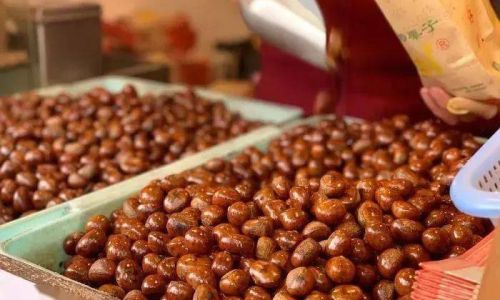
-
Timing: Peel the chestnuts while they are still warm but not too hot to handle. The heat helps loosen the shell from the kernel.
-
Technique: Use your fingers to gently squeeze the sides of the chestnut opposite the scored area. The shell should crack open, revealing the golden kernel. Alternatively, you can use a nutcracker, but be careful not to crush the kernel.
-
Removing the inner skin: Sometimes, a thin, fibrous inner skin may remain attached to the kernel. To remove it, rub the kernel between your palms or use a paper towel to gently wipe it off.
Serving and Enjoying Your Qianxi Chestnuts
Now that your Qianxi chestnuts are perfectly roasted and peeled, it’s time to enjoy them. Here are some serving suggestions:
-
As a Snack: Simply serve them in a bowl as a warm, comforting snack. They pair wonderfully with a cup of hot tea or coffee.
-
In Desserts: Incorporate roasted chestnuts into your favorite desserts, such as cakes, pies, or ice cream. Their natural sweetness and creamy texture can elevate any dessert.
-
In Savory Dishes: Qianxi chestnuts can also be used in savory dishes like stews, soups, or risottos, adding a rich, earthy flavor.
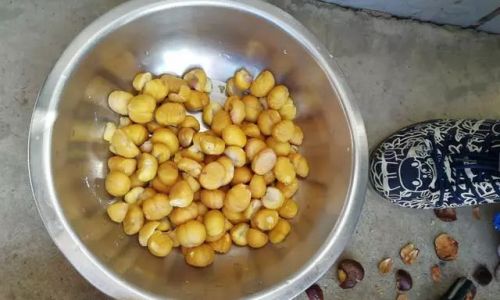
-
Gift-Giving: Package peeled, roasted chestnuts in small, attractive containers and give them as gifts to friends and family during the holidays.
Storage Tips
If you have leftover roasted chestnuts, here’s how to store them:
-
Refrigeration: Place peeled chestnuts in an airtight container and refrigerate for up to a week. Reheat them gently before serving to maintain their texture.
-
Freezing: For longer storage, freeze peeled chestnuts in a single layer on a baking sheet until solid, then transfer to an airtight container or freezer bag. They can be kept frozen for up to three months. Thaw overnight in the refrigerator before reheating.
Troubleshooting Common Issues
Even with the best intentions, things can sometimes go awry when roasting chestnuts. Here are some common issues and how to troubleshoot them:
-
Chestnuts Are Tough or Dry: This can happen if they are overcooked. Next time, reduce the roasting time slightly and monitor closely.
-
Shells Burst Open: This usually occurs when the scoring is too deep or the chestnuts are roasted at too high a temperature. Adjust your scoring technique and reduce the heat if necessary.
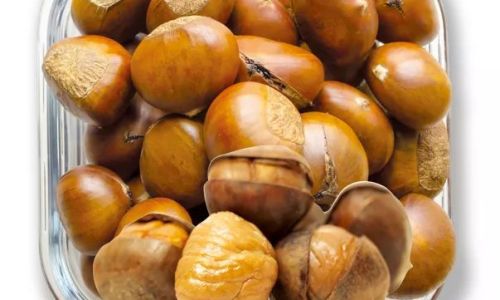
-
Inner Skin Is Hard to Remove: Soaking the chestnuts before roasting can help with this. Additionally, rubbing the kernel between your palms while it’s still warm can loosen the inner skin.
Conclusion
Roasting Qianxi chestnuts for easy peeling is an art that combines careful selection, proper preparation, and the right roasting technique. By following the steps outlined in this guide, you can enjoy perfectly roasted, tender, and easy-to-peel chestnuts that are a delight to eat. Whether you’re serving them as a simple snack or incorporating them into more complex dishes, Qianxi chestnuts will add a touch of elegance and flavor to your culinary endeavors. So, gather your ingredients, preheat your oven or
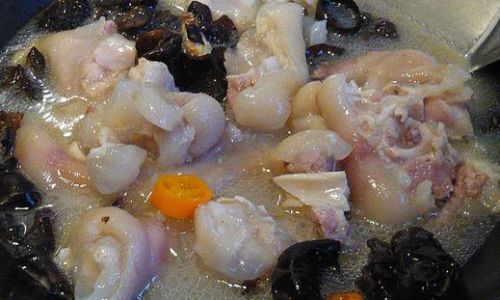
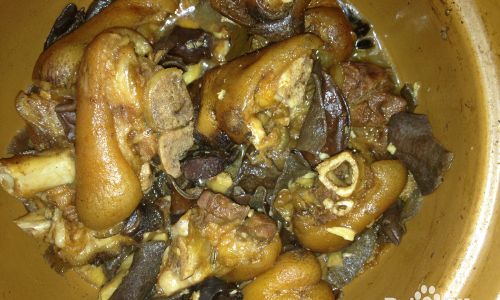
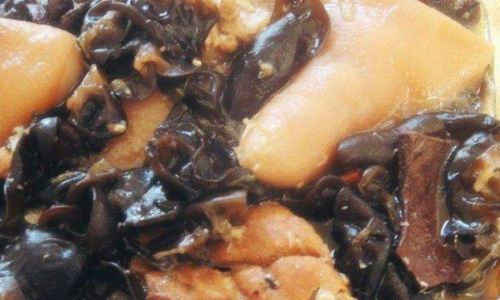
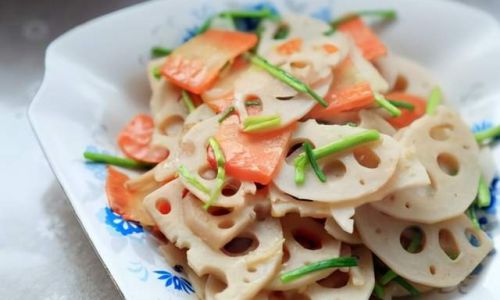
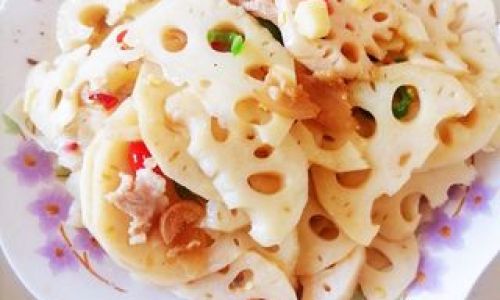
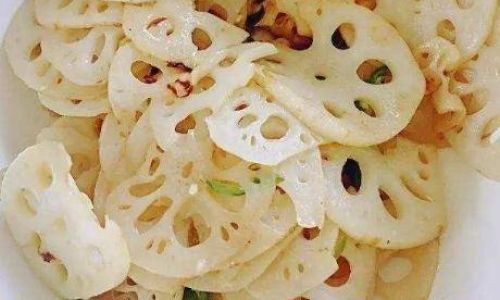
0 comments